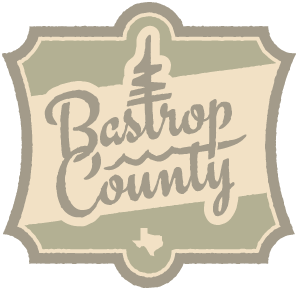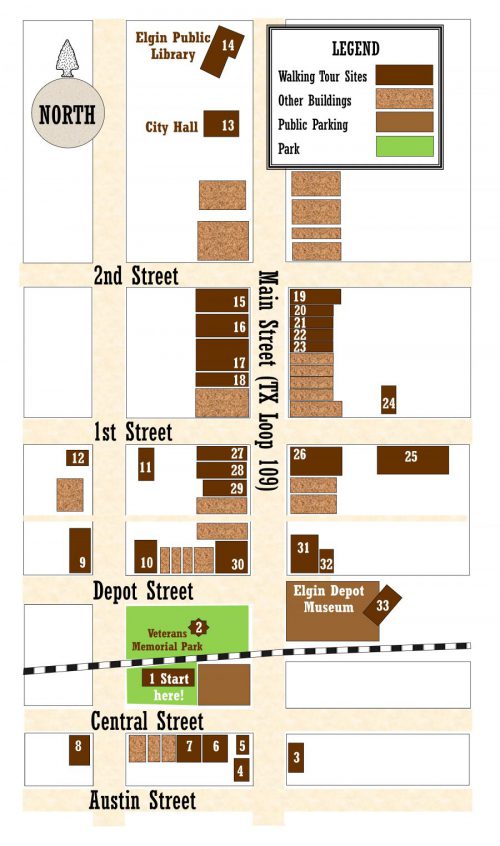Elgin Historical Downtown Walking Tour

Welcome to the City of Elgin, Texas!
Incorporated on May 13, 1872, the City of Elgin was named for Robert Morris Elgin, the railroad land commissioner. A flood of the Colorado River in the early 1870s quickly persuaded the Houston and Texas Central Railroad system to re-survey a line through Manor to Austin. The original had been a line from McDade, southwest to the Colorado River between Bastrop and Webberville. In 1886, a new North-South line was organized and Elgin became the beneficiary of two major rail lines with eight passenger trains daily.
The early 1900s brought growth and prosperity to Elgin. A bumper crop of cotton in 1900 helped to establish five cotton gins and a cotton oil mill, all in operation at the same time. Three brick manufacturing companies in the area gave Elgin the title, “The Brick Capital of the Southwest.”
The growth continued through the 1920s when most of the brick commercial buildings were built.
Currently, Elgin’s population is a proud 8,000 and growing! Elgin is famous for Elgin’s hot sausage, giving us the title of “Sausage Capital of Texas.” In addition to brick and sausage, it is also known for its friendly folks. The historic downtown district is listed on the National Register of Historic Places.
Map Legend
- Houston and Texas Central Freight Depot, 114 Central Avenue - Built 1872
- Veterans Memorial Park, Depot Square - Established 1912
- The Arbuckle Garage, 100 South Main Street - Circa 1920s
- The Rivers Building, 110 South Main Street - Built 1906
- Elgin National Bank, 101 Central Avenue - Built after WWII
- Original Southside Market and BBQ Building, 109 Central Avenue - Circa 1920s
- Ridings Grocery and Santos Building, 111-113 Central Avenue – Unknown
- P. Bassist Opera House, 201 Central Avenue – Built 1906
- Courier Printing Building, 200 Depot Avenue - Built 1910
- O'Connor Building, 116 Depot Street - Built 1890
- United States Post Office, 21 North Avenue C - Built 1936
- Webb Building, 34 Avenue C - Built 1947
- Nofsinger House, 310 Main Street - Built 1906
- Elgin Public Library, 404 Main Street - Built 2004
- The Bengston Building, 114 Main Street - Built 1912
- O'Connor Building, 112 and 110 Main Street - Circa 1920
- Joe's Toggery Building, 106 Main Street - Circa 1901
- Singleton's Grocery and Frost Barber Shop, 104 Main Street - Unknown
- J.C. Miller Building, 119 Main Street - Built 1913
- J.C. Miller Funeral Chapel, 117 Main Street - Built 1913
- Ramsey Pharmacy, 115 Main Street - Built 1910
- Ray's Barber Shop, 113A Main Street - Built 1910
- McGee Brothers Shoe and Upholstery Shop, 113B Main Street - Circa 1910
- Culp Building, 202 East 1st Street - Circa mid-late 1940s
- Elgin Cotton Oil Mill, 301 East 1st Street - Built 1906
- Elgin National Bank, 31 Main Street - Built 1923
- Miller Building/Merchants & Farmers State Bank, 34 Main Street - Circa 1890
- Simon's Building, 30 Main Street - Built 1906
- Jones Drug Store, 28 Main Street - Circa 1895
- Wood/Beltran Building, 14 North Main Street - Built 1890
- City Café/Standifer Building, 19 Main Street - Built 1891
- A. Christian Saloon, 16 Depot Square - Built 1897
- Union Depot, 15 Depot Square - Built 1903
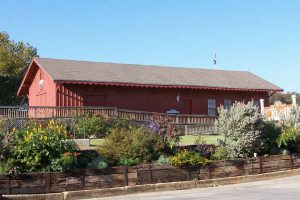
Houston and Texas Central Freight Depot
1872
This small depot, built in 1872, was the original freight depot for the H. & T. C. line. The building was renovated from 1999 to 2002 and has the original board and batten construction. It is the oldest building downtown. It now serves as the Chamber of Commerce building for the City of Elgin.
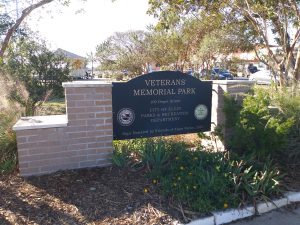
Veterans Memorial Park
Established 1912 (as City Park)
Once the location of the Mutual Lumber Company, the spot became a project of the ladies of the Civic Improvement Committee. They found a new home for the lumber yard and signed a lease with the railroad company with plans to convert the park. A bandstand was erected and the park became much more inviting. The bandstand was removed after WWII and replaced by a fountain. In 1991, the current gazebo was built in an effort to revitalize the park. Originally called City Park, it was named Veterans Memorial Park in early 2000.

The Arbuckle Garage
Circa 1920s
Opened in the 1920s as the Arbuckle Garage, it was a full service automotive repair shop and gas station. Their neighbor to the immediate south of this property was The Mule Barn, owned and operated by Roy Rivers, Sr. The Mule Barn was a grocery store, feed store and kept mules and horses. The mules were typically sold to farmers and horses were rented by the hour to soldiers from Camp Swift to “play cowboy” when on leave.

The Rivers Building
Built 1906
Built in 1906, The Rivers, a founding family in the Elgin community, established a successful mercantile at 110 South Main Street and were involved in many business, social and cultural activities in Elgin. It was known as the Rivers Mercantile or Rivers Brothers. They carried everything from farm equipment to groceries and dry goods. The building had a roller skating rink on the 2nd floor and for many years served as a bus station.
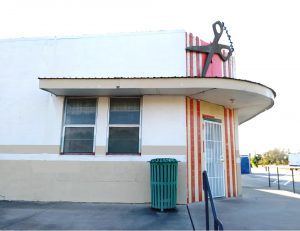
Elgin National Bank
Built after WWII
This is the site of the original Elgin National Bank. The bank itself moved to its present location on North Main Street in the 1920s. The old bank building burned around 1942. The present retro building which currently houses a barber shop and restaurant was built after World War II. Perhaps the best known business in this building was the Elgin Frozen Food Locker, which opened in 1946.
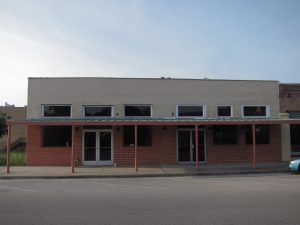
Original Southside Market and BBQ Building
Circa 1920s
In 1882, Southside Market was established as home of the famous Elgin “hot” sausage. William Moon, the original owner, started the market on Farm Road 1704. He sold his product door to door out of a wagon. By 1886, Southside Market was located at 117 central Avenue and continued to move around until it found its home here between 1944 and 1991. The locals, as well as the State of Texas, have kept the demand high for Elgin’s “hot guts,” securing Elgin as the Sausage Capital of Texas in 1995.
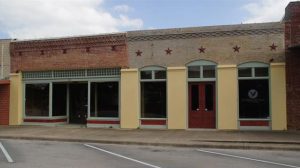
Ridings Grocery and Santos Building
Unknown
The Ridings Family operated a grocery store for many years serving the Elgin community. The Santos building was a bar and grocery store. These classic storefronts and original Elgin brick represent typical architecture of the time.
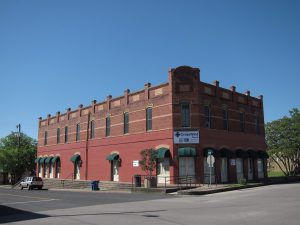
P. Bassist Opera House
Built 1906
Built by German immigrant Philip Louis Bassist in 1906, this opera house quickly became the center of Elgin’s cultural and social scene. The auditorium located on the second floor hosted shows, operas and the celebrities of the day including Lily Langtry. The ground floor was used by various commercial establishments including Benitz Jewelry and Bassist Produce. It served as the third home of the Elgin Post Office in 1908.
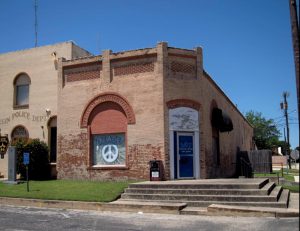
Courier Printing Building
Built 1910
Built by B.J. Soloman and the Mutual Lumber Company, this building was the second home to the Elgin Courier, Elgin’s local newspaper. The Elgin Courier has been in continuous operation since 1890 and serves the community today.
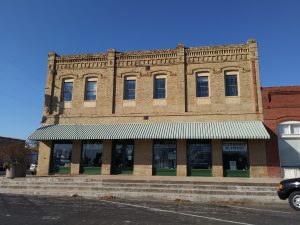
O’Connor Building
Built 1890
This two-story buffed brick building was constructed by Thomas O’Connor in 1890. Mr. O’Connor was an Irish-born brick contractor who moved to Elgin in the late 1800s to build cisterns, wells and fireplaces for the growing community. He initially bought bricks from Butler Brick Company in Austin, but found a source of high-quality clay in the Elgin area and began manufacturing his own bricks. the building contained a furniture store on the ground level and family quarters on the second floor. The freight elevator is still in working condition!
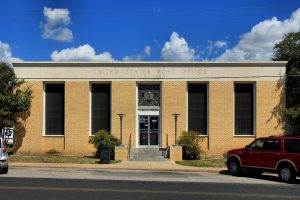
United States Post Office
Built 1936
Built in 1936 to permanently house Elgin’s post office, this depression-era, streamlined, art deco building is one of a kind in Elgin. Inside you will find a well-preserved W.P.A. mural painted by Julius Woeltz in 1939. Titled “Texas Farm,” the mural was part of a federal program to provide work for artists. You will also find original fixtures in the building.
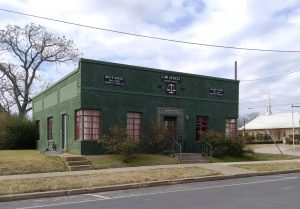
Webb Building
Built 1947
Built in 1947, the Webb building housed the family law firm which was established March 12, 1900 by C.W. Webb. In 1923, his wife, Emma, joined the firm and in 1945 their son, Jackson S. Webb, became a junior member of the firm. In 1961, Ross Meredith joined the firm and it became known as Webb, Webb & Meredith Attorneys. The firm provided legal services to the City of Elgin for many years and was known as the law north of the Colorado. After 93 years, the Elgin law office closed its doors, ending a “mighty chapter in one of Elgin’s longest continuous family operated businesses in this community,” wrote the Elgin Courier newspaper, June 1993.
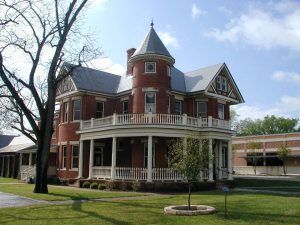
Nofsinger House
Built 1906
This Victorian brick home was built by Dr. and Mrs. I.B. Nofsinger in 1906. Dr. Nofsinger came to Elgin from McDade in 1900 even though there were four other physicians in town. It was a smart move considering the population grew from 832 people in the year 1890, to 1709 people in the year 1910. Mrs. Nofsinger designed the house and the floor plan. the ground-level rooms have 11 foot, 10 inch ceilings, and the upstairs rooms have nine-foot ceilings. Bricks were made from deep red clay manufactured by the Elgin Press Brick Company. the tall cupola on the left front adds to the uniqueness of the home. In 1980, Elgin Savings and Loan purchased the home and it was converted to the use of a savings & loan. Currently the house serves as Elgin city Hall and was restored in 2003.
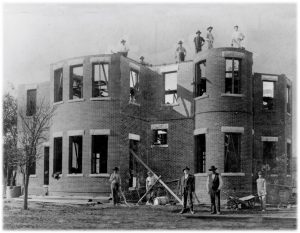
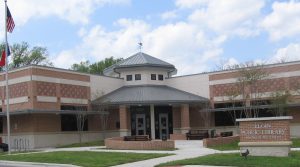
Elgin Public Library
Built 2004
the New Century club started the first library in Elgin in the early 1900s and supported locations on Avenue C and Lexington Road. In 1985, volunteers opened a storefront on Main Street with donated books and the library grew into the wonderful facility and services enjoyed by the community today. Constructed in 2004, at a costs of $1.7 million in voter approved bonds, the 14,000 square-foot facility includes a community room, computer lab, conference room and reading materials for all ages.
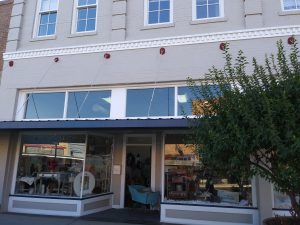
The Bengston Building
Built 1912
Seistrom Hardware was one of the early businesses in this building. Its owners sold farm equipment and tools, as well as other items used by the early citizens of Elgin. Horses were also once stabled in the back portion of the building.
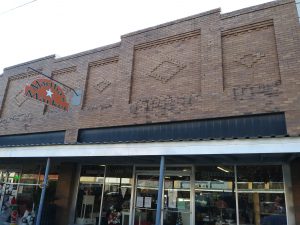
O’Connor Building
Circa 1920
This building was constructed around 1920, built by Thomas O’Connor. Occupied by Alex Moore Grocery, Levine Dry Goods and then Eikens five-and-dime store. It was vacant during much of the depression. The building was later occupied by Winns and Bill’s Dollar Store.
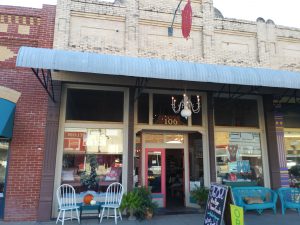
Joe’s Toggery Building
Circa 1901
This building was constructed around 1901 and housed Joe’s Toggery, which sold clothing, hats and footwear. A unique feature of this building is a full-height ghost sign depicting Owl Cigars painted on the then exposed north exterior wall of the adjacent 104 North Main building, circa 1900-1901. The interior original bead board ceiling is intact and the skylight was restored.
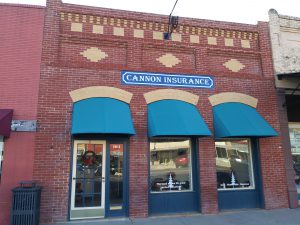
Singleton’s Grocery and Frost Barber Shop
Unknown
This building was occupied in the early years by Singleton’s Grocery and Frost Barber Shop. The grocery was tiny, as noted by one of Elgin’s senior citizens, who was a boy at the time. The little grocery, small as it was, found room to market a few used musical instruments including violins and guitars. It became J.M. Puckett’s Tin and Repairs Shop in 1908. Mr. Max Sandgarten’s dry goods store was in this building from 1924 until 1948. Meyer Simon followed with a dress shop. Doreen’s, a boutique came later.
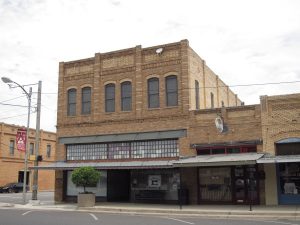
J.C. Miller Building
Built 1913
Built by J.C. Miller to house his furniture and funeral business, this two-story masonry structure was restored in 1985 by its current owners, Owen, Bogart & Rogers Attorneys at Law. The Miller Furniture Co. was housed on the first floor and the second floor housed the funeral business. The building still sports some of the best looking and best preserved pressed tin ceilings in Elgin. Also note the original tiled entry way that reads, “J.J. Miller 1913.” The building has two working elevators.

J.C. Miller Funeral Chapel
Built 1913
There was an alley here in the past as indicated by the existence of a Spearmint Gum ghost sign on the inside of the present building. The mural was discovered during a renovation in 1985. J.C. Miller built this small building in 1913 to house his funeral chapel. Note the multi-colored transom windows, the lead-pained glass and the interior sky lights still in use.
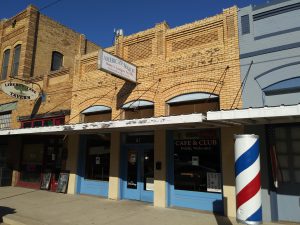
Ramsey Pharmacy
Built 1910
Ramsey Pharmacy served Elgin residents for over 40 years at this address. All the interior fixtures, including the amazing soda fountain, were built for the pharmacy in 1950.
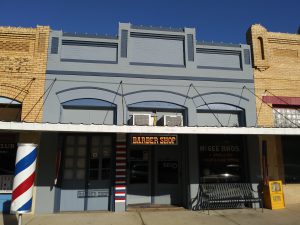
Ray’s Barber Shop
Built 1910
In 1911, Mr. Roy Ray set up his barber practice and in 1912 his brother D.B. Ray joined him. They moved it to this location in 1940. In 1971, after barbering for 61 years, Roy Ray died, leaving his brother to carry on the business. In 1992, D.B. Ray retired at the age of 100. Since then the shop has been remodeled, but still houses the original fixtures. The barber pole outside was made out of an old water heater because earlier wooden ones kept getting knocked over.
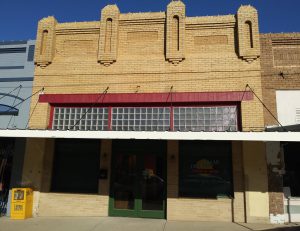
McGee Brothers Shoe and Upholstery Shop
Circa 1910
In 1928 Ross McGee purchased this shoe shop from Will Nichols. He was soon joined by his brothers Mack and Howard McGee, although Mack did not stay long in the business. The brothers knew nothing about repairing shoes, but it was the Depression, and they were willing to learn and to work hard. The business expanded into mattress making, seat covers for automobiles and furniture upholstering. Much of the original shoe repair and mattress making equipment remains inside. This family business has been in continuous operation since 1928.
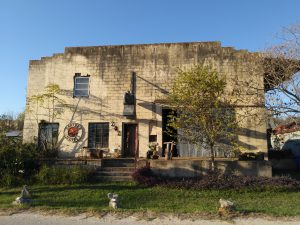
Culp Building
Circa mid-to-late 1940s
Constructed in the mid to late 1940s of concrete block, the Culp Building was originally a trade warehouse selling ear corn, watermelons, etc. Over the years, it has been a flour trading company, a grain/feed mill and a metal-smith shop.
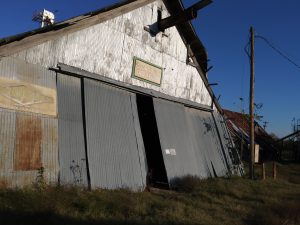
Elgin Cotton Oil Mill
Built 1906
Operating since 1906, this mill still uses machinery that presses the seed to obtain the oil without using chemicals for processing. Originally, a cooperative called the Elgin Cotton Oil company, E.O. Lundgren purchased the mill in the mid-1930s. It is currently operated by a third generation of the Lundgren family One of four in Texas and one of 12 in the United States, the mill processes cotton seed, provides grain storage and retail feed sales. The A-frame buildings with tall roof lines store cotton.
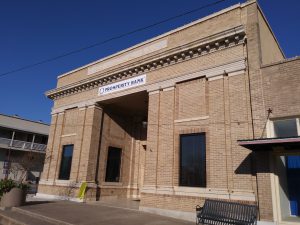
Elgin National Bank
Built 1923
The Bank of Elgin, organized in 1891, was privately owned by entrepreneur W.H. Rivers. The bank was incorporated on April 21, 1906. It was first located on the south side of town, but the original structure burned down in 1923. The bank is Elgin’s only structure from the Beaux Arts Period. Designed by world-renowned architect, Hugo Franz Kuehne, Elgin Bank may be the single most important structure in the community. Kuehne was known for his studies and style influence on Texas. He went on to design state buildings, many of which can still be see today in the Austin area.
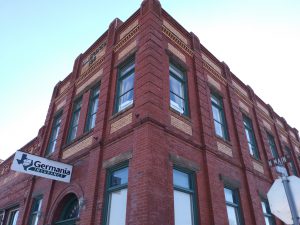
Miller Building/Merchants & Farmers State Bank
Built 1901
The Miller Brothers Building was built in 1901 and added to in 1911. The property is a good example of a two-art commercial building with elaborate detailing which retains its essential architectural integrity.
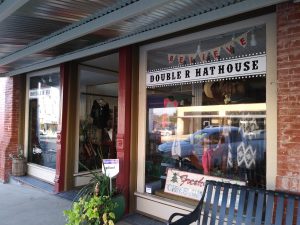
Simon’s Building
Built 1906
In August of 1919, Mr. and Mrs. H. Simon moved to Elgin from Hempstead, Texas to open a dry goods and clothing store in the old Smith Building (100 North Main). In 1922, Mr. Simon opened a second store two blocks south of the Elgin National Bank. He was assisted by his sons, Abe, Manny and Meyer. In 1935 Mr. Joe Simon purchased the business from his father. Simon’s, one of the original department stores in Elgin, closed in 1998.
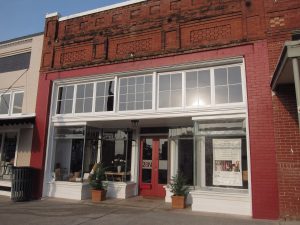
Jones Drug Store
Circa 1895
This building was constructed around 1895. For many years it operated as Jones Drug Store. Even though Mr. Eroy Jones was a pharmacist, he lived very frugally. Locals remember he was very kind and unassuming and that he wore a pair of broken eyeglasses for years.
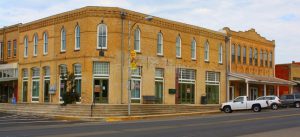
Wood/Beltran Building
Built 1890
This building, constructed around 1895, was the location of Dr. William Wood’s medical practice early in the 20th century. Harvard McCloud operated a pharmacy for Dr. Wood on the ground floor. The soda fountain in this store was a popular meeting place during and after World War II. (The bus station for Camp Swift was next door.) The pharmacy was taken over by Charles Ramsey who later moved his business to 115 N. Main Street. There have been many tenants since then. The building is a fine example of Elgin’s early brick architecture.
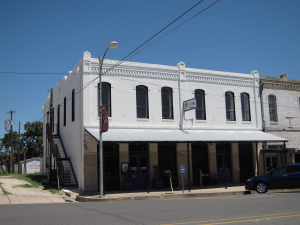
City Café/Standifer Building
Built 1891
This building was constructed by the Elgin Improvements Company and is believed to have been the second brick building in downtown Elgin. It first housed a general store and drug store on the first floor and an opera house upstairs. In the part closest to Depot street there have been various dry goods stores (one of the first was Sellah’s) and the American Legion on the 2nd floor. In 1910 the north end of the building housed a jewelry store, a barber shop and a bakery. The City Cafe opened in about 1910. This part of the building has been a restaurant, often called “The City Café,” which has been renovated many times.
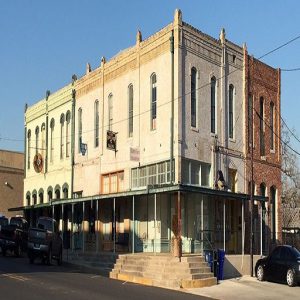
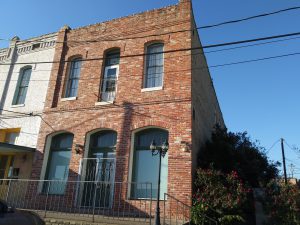
A. Christian Saloon
Built 1897
Mr. A.S. Christian, a descendant of Mary Christian, the original pioneer in this area, bought the lot in 1897 for $300 and built the present structure. Christian’s Saloon was one of seven saloons in downtown Elgin at a time when Elgin was known as “wild” with the best (or worst) western traditions. Elgin’s reputation was perhaps best illustrated by the manner in which the train conductor announced the stop as “Hell-gin.” There was a large sign painted on the side of the building which read, “A. Christian Saloon” to attract customers from the eight daily passenger trains.
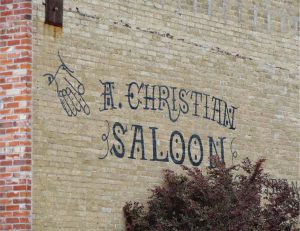
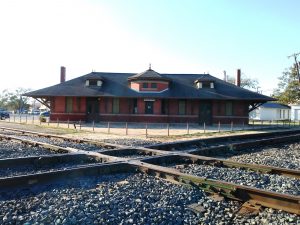
Union Depot
Built 1903
Elgin Union Depot was built jointly by the Houston & Texas Central and Missouri Kansas and Texas (MKT or “Katy”) railroads in 1903. It replaced a small wooden depot built in the 1880s. Olie Lorehn, a Swedish architect in Houston, designed the new brick building. Interlocker Tower #100, which housed the telegraph office and the switch levers, was built at the RR crossroads in 1913 and demolished in the 1970s. Passenger service ended in 1957 and the depot building then served as the Elgin Police Department from 1960 to 1990. After a lengthy period of fundraising and restoration, the building was opened as the Elgin Depot Museum in June 2002. It is operated by the Elgin Historical Association.
More information about Elgin may be found at the Elgin Depot Museum, 15 Depot Square, Elgin, Texas or call the Museum at 512-285-2000. If you find our work useful, please consider donating to the Museum: P.O. Box 1234, Elgin, TX 78621. We need your support to keep advancing our knowledge of Elgin history and producing exhibits.
